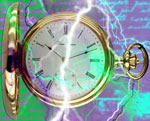 Fifth weekend with The Weekend Novelist Writes a Mystery: The backstory.
Fifth weekend with The Weekend Novelist Writes a Mystery: The backstory.The next 5 week ends are plotting. Plotting is the order you choose to put the events in. While all murders mysteries begin with a murder, that isn't where all novels begin. If you think of the sequence of events as:
A. Murder
B. Discovery
C. Reporting
D. Crime scene
a mystery novel can begin with any of those. If you begin at part C, then A and B are filled in as the book progresses. Which of these you begin with is up to you and up to the story you're trying to tell.
This weekend is pulling out details of the backstory from your imagination that creates the crime to help you order the events for your story. Dig into the the various characters' pasts to create details, choices and life events that lead up to one character desiring to end the life of another and one character to become the person someone wanted to kill.
There are 3 parts to creating the backstory:
1. Checklist
2. Chronology
3. Narrative summary
1. Checklist
This is details of the murder scene.
Time: What time of day does the killing take place? The will affect what the characters have done previous to the murder, what they're dressed for if they're headed for a meeting later.
Place: Where does the killing occur? This will affect transportation to and from the murder scene for both murder and victim. It will affect who might see them and whether if they're scene, some will note it as unusual.
Lighting: Important if the murder happens in a place that isn't well lit. You'll need to think about where the light sources are and how well the various characters (murderer, victim, witnesses) can see.
Weather: Affects how the characters are dressed. It will be notable if someone is dressed oddly for the weather suggesting they didn't intend to be where they were found or seen.
Arrival: How did the killer get there? How did the victim get there? Where did they get their transportation?
Departure: How does the victim get where she or he ends up (if the body is found in a different place from where the victim was murdered)? How is the body moved from where it's found? How does the killer get from the crime scene?
Struggle: Is there a struggle before the murder? What kind of clues does it leave behind?
Death instruments: What are the murder weapons? How does the killer acquire it or them? Was the murder item grabbed on the spur of the moment or chosen carefully? How does the killer get rid of the weapon?
Wounds: What wounds accompany the murder?
Wardrobe and makeup: How is victim dressed? What were they doing before or planning to do next? Did either murderer or victim leave items behind?
2. Chronology
Write a chronology of the series of events that led up to the murder. This could delve back years into the past that caused two characters to meet or caused one character to explore a new passion or cover up a secret.
3. Narrative summary
Write out the series of events that lead from one event to another and why. The authors suggest beginning sentences with "because" and "since", that is "Because Maloreen's little brother was her only family, he was a weak spot for her. Because Maloreen had a weak spot for her brother, when he began running with a bad crowd, she moved the two of them to the Moon colony. Because she moved to the Moon colony and set up shop there, she drew business away from the only other florist in the colony." Or, "Because Sparky's master was too busy to feed her, she peed on his shoes. Because the shoes he'd planned on wearing for the crime were peed on, he had to wear the pair with the distinctive tread."
Then try delving into motives and desires with sentences structured like "Since x wants (desires, yearns for) y and because z stands in his way, x kills her."
These are just techniques to force you to think about and build up the foundation that supports what happens.
Next week is Key Scenes.
No comments:
Post a Comment